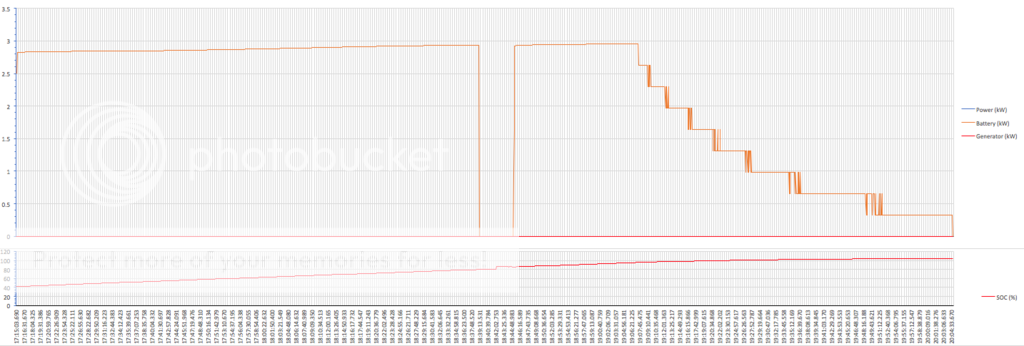Have a little bit clearer picture of the recharging process from the cars perspective.
The Battery voltage, and the battery power as well as the battery %SOC are shown. The vertical line is the transition from constant current to constant voltage.
This was during the last phase of recharging.
The %SOC rose in a negative exponential fashion, as expected.
The steps in the battery power reflect the low resolution of the measurement due to the small magnitude of the measurement. The resolution is only 0.3kW, so for 2kW, we only get a total of 6 steps. Even if the power measurement has 16bit resolution at a maximum value, at the point we are measuring, only 3bits are seen.
It is likely that the current measuring element is external to the battery, so any individual cell balancing within a pack would not be seen in any current measurements during the constant current or the constant voltage phase of the recharging. If cell balancing was going to happen, it is going to be difficult to see when it happens during the recharging. It is possible that the battery in my PHEV does not need any balancing. If just stopping the current was associated with cell balancing, I would expect to see some evidence, at least every recharge. There was none in this recharge, or the last 5 recharges. I have seen the recharging stop for periods of about 10mins during a recharge, and it is unlikely that this is related to cell balancing. This may be just to allow the PHEV computers to make internal adjustments, or compensations that would possibly affect the calculation of completion of recharging.
The recording of the systems when a rapid recharge is done, may shed some light. Rapid recharging is most likely to show cell differences due to the additional stresses place on the battery cells. Only the EU shipped PHEV has the rapid recharge port. My AUS shipped PHEV is without the necessary equipment, so I cannot test this.








































